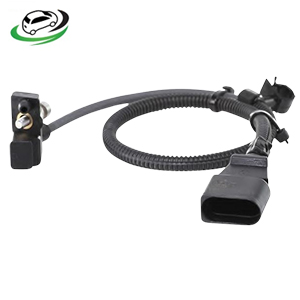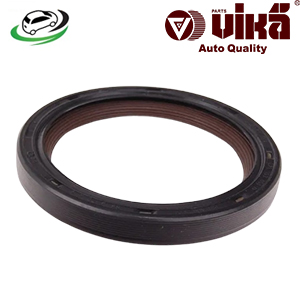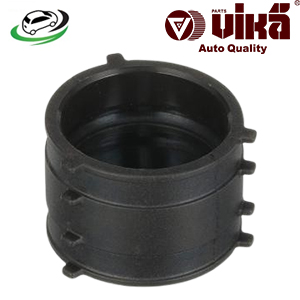-15%
Get Intake Manifold Hose AUDI A4/Avant/ A4/S4/ A6/ A6/S6 VW Golf/Passat 98-2012 06B133299C
The intake manifold hose is a vital component in an engine’s air intake system. It connects various parts of the intake manifold, helping to channel air into the engine for combustion. Understanding its function, types, benefits, signs of failure, and maintenance is crucial for maintaining engine performance and ensuring efficient operation.
What is an Intake Manifold Hose?
The intake manifold hose is a flexible tube that connects different parts of the intake manifold system. Its primary role is to channel air from the air filter or turbocharger to the intake manifold, where it mixes with fuel and enters the combustion chambers.
Components of the Intake Manifold System
- Air Filter: Filters incoming air to remove contaminants before it enters the engine.
- Turbocharger (if equipped): Compresses air to increase its density, providing more oxygen for combustion.
- Intake Manifold: Distributes the air-fuel mixture to the engine’s cylinders.
- Intake Manifold Hose: Connects the air filter, turbocharger, and intake manifold, ensuring a smooth flow of air.
- Throttle Body: Regulates the amount of air entering the engine based on the driver’s input.
Function of the Intake Manifold Hose
The intake manifold hose plays a crucial role in directing air through the engine’s intake system. Here’s a breakdown of its key functions:
Key Functions
- Air Transport: Channels air from the air filter or turbocharger to the intake manifold. Proper air flow is essential for mixing with fuel and achieving optimal combustion.
- Maintains Air Pressure: Ensures that the air entering the intake manifold is at the correct pressure, which is crucial for efficient fuel combustion and engine performance.
- Prevents Air Leaks: The hose provides a sealed connection between different components, preventing air leaks that could disrupt the air-fuel mixture and affect engine performance.
- Supports Engine Efficiency: By maintaining a consistent air flow, the intake manifold hose helps optimize engine efficiency, power output, and fuel economy.
Types of Intake Manifold Hoses
Intake manifold hoses come in various types, each designed to meet specific performance and durability requirements. The choice of hose type can affect the efficiency and reliability of the engine’s air intake system.
Common Hose Materials
- Rubber Hoses: Traditionally made from rubber or synthetic rubber, these hoses are flexible and resistant to heat and oil. They are often used in standard applications.
- Silicone Hoses: Made from silicone, these hoses offer higher temperature resistance and durability compared to rubber hoses. They are often used in high-performance and racing applications.
- Plastic Hoses: Rigid plastic hoses are used in some modern engines. They provide a more durable and stable connection but may be less flexible.
- Metal Hoses: In some high-performance applications, metal hoses or braided hoses are used to provide extra strength and resistance to high temperatures and pressures.
Benefits of the Intake Manifold Hose
The intake manifold hose provides several benefits that are critical for maintaining the engine’s performance and efficiency. Here’s a look at the key advantages:
Improved Engine Performance
- Consistent Air Flow: The hose ensures a steady and consistent flow of air into the intake manifold, which is crucial for proper fuel combustion and engine performance.
- Enhanced Power Output: By maintaining optimal air pressure and flow, the intake manifold hose helps achieve better engine power and acceleration.
Increased Fuel Efficiency
- Optimized Combustion: Proper air flow contributes to efficient fuel combustion, which can improve fuel economy and reduce fuel consumption.
- Reduced Emissions: Efficient combustion also helps lower emissions, contributing to a cleaner environment and compliance with emissions standards.
Durability and Reliability
- Prevents Air Leaks: A well-maintained hose prevents air leaks that can disrupt engine performance and lead to increased fuel consumption or engine damage.
- Resists Heat and Pressure: High-quality hoses are designed to withstand the heat and pressure of the engine’s air intake system, ensuring long-term reliability.
Signs of a Faulty Intake Manifold Hose
A faulty intake manifold hose can lead to various engine performance issues. Recognizing the signs of a damaged or leaking hose is essential for timely repairs and maintaining engine efficiency.
Common Symptoms of a Faulty Hose
- Engine Misfires: A damaged hose can cause air leaks, leading to incorrect air-fuel mixtures and engine misfires.
- Rough Idling: If the hose is leaking or not functioning properly, the engine may experience rough or uneven idling.
- Reduced Power and Acceleration: Air leaks or blockages in the hose can lead to decreased engine power and acceleration.
- Check Engine Light: A malfunctioning intake manifold hose can trigger the check engine light on the dashboard. Diagnostic trouble codes (DTCs) related to air intake or fuel mixture may be stored in the ECU.
- Hissing or Whistling Sounds: A damaged or loose hose may produce hissing or whistling noises as air escapes from the intake system.
- Increased Fuel Consumption: Leaks or inefficiencies in the air intake system can lead to poor fuel combustion and increased fuel consumption.
Maintenance and Inspection of the Intake Manifold Hose
Regular maintenance and inspection of the intake manifold hose are essential for ensuring its proper function and preventing potential issues.
Inspection Tips
- Visual Inspection: Periodically check the hose for visible signs of damage, such as cracks, tears, or swelling. Inspect the connections for any signs of looseness or leaks.
- Check for Leaks: Use a vacuum pump or smoke machine to check for leaks in the intake system. Leaks can often be detected by observing changes in engine performance or listening for unusual sounds.
- Monitor Engine Performance: Pay attention to any changes in engine performance, such as rough idling, reduced power, or increased fuel consumption. These symptoms may indicate a problem with the intake manifold hose.
Maintenance Tips
- Keep the Hose Clean: Ensure that the hose and its connections are clean and free of debris. Dirt or contaminants can affect the hose’s performance and lead to leaks.
- Check Hose Integrity: Regularly inspect the hose for signs of wear or damage. Replace any worn or damaged hoses promptly to avoid further issues.
- Ensure Proper Installation: When installing or replacing the hose, ensure that it is properly aligned and securely fastened to prevent leaks and maintain optimal performance.
Replacing the Intake Manifold Hose
Replacing the intake manifold hose is a relatively straightforward process that can be done with basic tools. Here’s a step-by-step guide to help you through the replacement process.
Replacement Process
- Prepare the Vehicle: Ensure the engine is cool and the vehicle is parked on a level surface. Disconnect the battery to prevent electrical shorts.
- Locate the Hose: Find the intake manifold hose, which is typically connected between the air filter, turbocharger, and intake manifold. Refer to the vehicle’s service manual for the exact location.
- Remove the Old Hose: Loosen the clamps or fittings securing the hose to the air filter, turbocharger, and intake manifold. Carefully remove the old hose from its connections.
- Install the New Hose: Position the new hose in place and secure it with the clamps or fittings. Ensure that the hose is properly aligned and tightly fastened to prevent leaks.
- Reconnect the Battery: Reconnect the battery terminals and ensure that all electrical connections are secure.
- Check for Leaks and Test the Engine: Start the engine and check for any leaks or unusual noises. Monitor engine performance to ensure that the new hose is functioning correctly.
- Inspect for Proper Installation: Verify that the hose is securely attached and properly aligned. Check for any signs of leaks or issues that may need to be addressed.
Follow us on Facebook for more parts.



